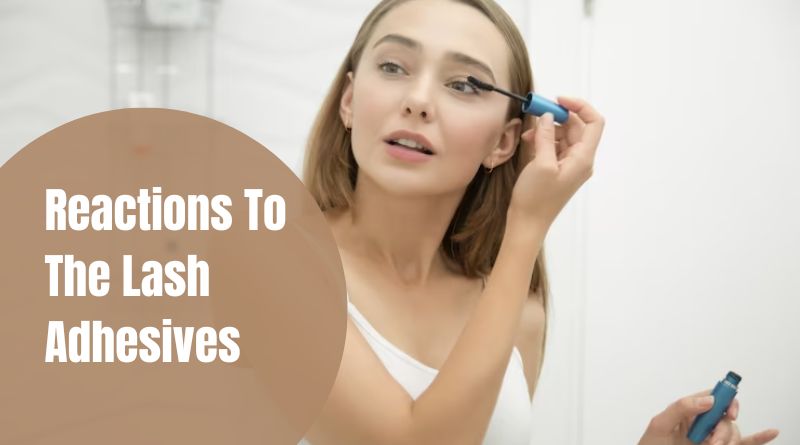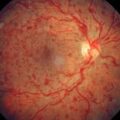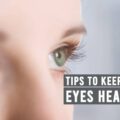Reactions To The Lash Adhesives
Table of Contents
Client Eye Irritation or Allergy: How to Tell?
Red, swollen eyes, itching, tightness, watering, and a burning sensation are all symptoms that can be caused by eye irritation as well as allergies. When exposed to an irritant, the immune system does not mount a defence mechanism, and the condition typically improves after 24 hours. It can be challenging to determine what triggered an allergic reaction because symptoms may not appear for hours or days after exposure.
Cause of Irritation
Fumes released during the curing and solidification of adhesives may cause irritation. Irritation is most likely to occur on the eyelids and other sensitive areas of the body where the skin is thinner.
It’s crucial to have adequate ventilation. It’s best practise to keep windows open at all times and point any fans or air conditioners away from the treatment bed.
Furthermore, the adhesive itself may not be the source of the irritation. The client may have an allergic reaction to the eye pads, the tweezers, the brush, or the foam cleanser.
Cause of Allergies
Allergies occur when the immune system overreacts to otherwise innocuous substances, or allergens. Antibodies are made by the immune system to counteract these allergens. The severity of an allergic reaction may increase as exposure to the allergen increases. Affected areas include the skin, eyes, nose, and throat.
The development of an allergy requires repeated and prolonged contact with the offending allergen. Customers who have never had an allergy to cyanoacrylate, the main ingredient of the lash adhesives, may eventually develop an allergy and be forced to discontinue getting their eyelashes extended. Only a tiny fraction of customers experience an allergic reaction, and their symptoms go away once the lash extensions are no longer present.
If the body is repeatedly exposed to the allergen (say, through the use of eyelash extensions), the allergy may resurface. Once an allergy has developed, the immune system will react excessively whenever the allergen is encountered again.
Cyanoacrylate: What Is It?
Cyanoacrylate is the primary component of lash adhesives and is responsible for the glue’s adhesive properties. The lashes would not stay attached to the extensions without the cyanoacrylate. Even eyelash adhesives designed for people with allergies or sensitivities still use this ingredient. Cyanoacrylate-based eyelash adhesives pose no health risks when applied as directed.
Effectiveness of Lash Adhesives
When cyanoacrylates are exposed to water, they harden. Humidity in the room is crucial for this purpose. When humidity levels are high, adhesives cure more quickly, and vice versa. Once cured, it poses no health risk and can no longer irritate the skin. When fully cured, adhesive is watertight and can be washed off with water to soothe inflamed skin.
Because it takes the adhesive longer to cure when it’s dry outside, more people are exposed to the fumes and irritants. Repeat customers who experience an allergic reaction despite your best efforts to ensure their safety during treatment highlight the importance of considering not only the client’s health but also the surrounding environment and the season.
Determining Cyanoacrylate Allergy
As long as the extensions are not applied carelessly and the adhesive does not get in the client’s eye or on their skin, cyanoacrylate is generally well tolerated. However, as was previously discussed, in extremely unusual cases, customers may develop an allergy to this component.
A client is considered high risk for lash extensions if a patch test reveals any redness or itching. It is important to inform your client of any potential contraindications and allergies prior to performing a patch test due to the small amount of adhesive used in the test.
Resolving Complains of Itchiness or Allergies
Inquire about the duration of the sensitivity and the specific symptoms you’re experiencing. Inquire as to whether or not the client has been exposed to any other irritants. If you haven’t already, you should inquire about seasonal allergies. Remind them not to touch their eyes or pull at their eyelashes. Clients should come in as soon as possible to have the lash extension removed. Tell the client to get in touch with their doctor right away if they experience any particularly severe symptoms.
FAQs
1. How Can I Know If I Have Allergies With Lash Adhesives?
A patch test can be performed to assess a client’s tolerance to the adhesive. If the patch test reveals any redness or itching, it indicates a potential allergy, and the client should be considered high risk for lash extensions.
2. Can I Request a Patch Test?
Yes, you can definitely request a patch test before applying lash adhesives. Requesting a patch test is a responsible and proactive measure to ensure the client’s safety and minimise the risk of adverse reactions.
3. What can cause eye irritation when using lash adhesives?
Eye irritation can be caused by fumes released during the curing and solidification process of lash adhesives. The eyelids and other sensitive areas where the skin is thinner are more prone to irritation.
4. How can I differentiate between eye irritation and an allergic reaction caused by lash adhesives?
Both eye irritation and allergies can cause similar symptoms such as redness, swelling, itching, tightness, watering, and a burning sensation. Eye irritation typically improves within 24 hours, while allergies may have delayed symptoms appearing hours or even days after exposure.
Recommended Articles:
Ways To Overcome Dry Eye Issues
Can Eyelid Lifts Affect Your Vision








